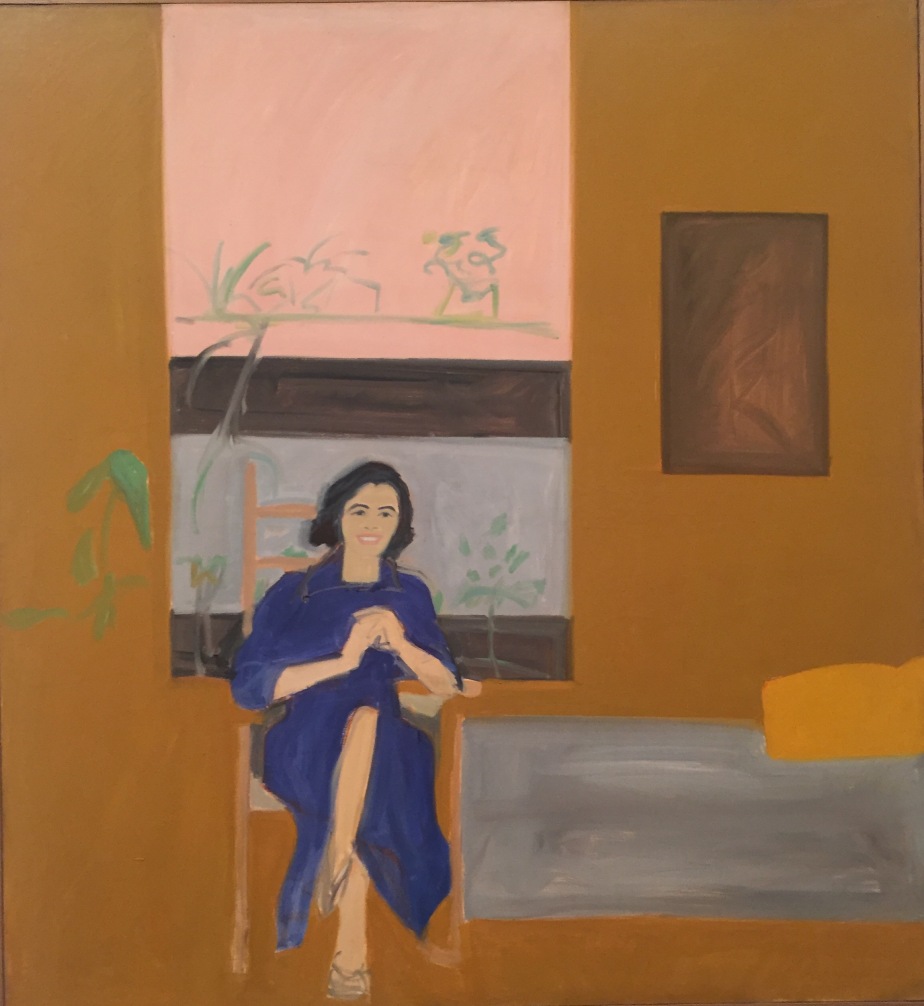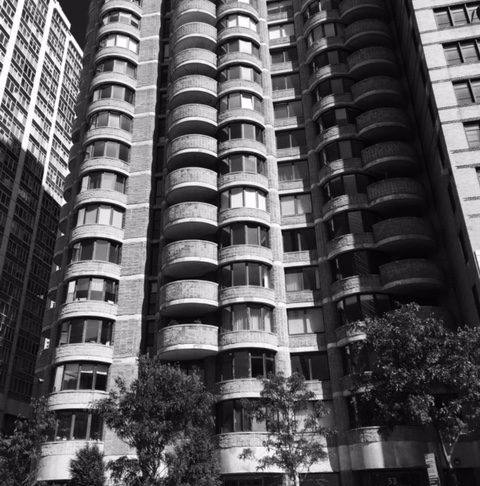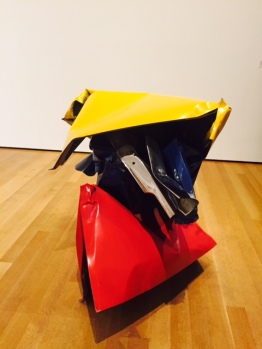Nothing truly says summer like an Alex Katz exhibition and it is only fitting that “Brand New and Terrific” at the Neuberger Museum of Art at Purchase College, NY, should end as the cold snap begins. Goodbye to the casual style of slung jackets and white tennis shoes in “After Softball”, 1953 and the relaxed mode of “Lincolnville Beach”, 1956.
 After Softball, 1953
After Softball, 1953
 Lincolnville Beach, 1956
Lincolnville Beach, 1956
Though this exhibition concentrates on his early work and precedes his more well-known Blue Umbrella and crisp, bolder palettes, it confidently displays the evolution of Alex Katz’s style. And style, it seems, is everything to Katz.
Influenced by the advertising posters of the fifties and sixties, there is something iconic about Katz’s work, despite it not fitting in exactly to any genre. “I never fit in,” he told The New Yorker, “I’m not a Pop artist, and people can’t see my work as realistic, either.” Like Warhol, Katz is fascinated by fashion and many of his paintings reflect a seemingly country club set though Katz states “Most of my paintings are of poor poets and painters. So why the perception that he paints only privilege and prosperity? He shrugs. “I record whatever’s in front of me,” he replies. “It’s the style that’s fancy” and he mentions that his fashion interest derives from memories of his immaculately dressed father.
The flatness of his work suggests a certain confidence and detachment, as well as an abstraction. Here these early works are presented as an exercise in reduction. Despite his work bridging modernism and the dominating Abstract Expressionism of the period, it can also be seen as one of the precursors of Pop Art. Indeed, in an interview Katz proclaims ” Warhol ripped me off”. Despite Warhol focusing on everyday objects, Katz’s subjects were objectified in their detachment.

By depicting two figures in Clamdiggers at Ducktrap (1956), above, and a repeated figure in Double Portrait of Rauschenberg (1959), below, Katz paid homage to choreographed composition, possibly referencing their contemporary, John Cage, who choreographed installations and dance happenings with Rauschenberg. This introduction of a repeated image is experimental in that it precedes the work of Andy Warhol and David Hockney.


Although Katz’s fascination with Matisse, can be seen in his collages and some of his paintings, particularly 10 AM, 1959, above, it is hard to ignore the orangey yellow of Ives Field, 1956, below, which adds a distinctive Van Gogh palette.

One is reminded of Van Gogh’s letter to Emile Barnard in 1888 in which he writes, “There is no blue without yellow and without orange, and if you put in blue, then you must put in yellow, and orange too, mustn’t you?” It is also unlikely that the naming of Alex Katz’s only child, Vincent was coincidental. At a time when the work of Jackson Pollock and de Kooning defined an era, it is interesting to see not only the influence of these European artists in Katz’s work but also validation of the roots of Katz’s modernist abstract style.
Although this exhibit does not display Katz’s later more well known work, it does successfully demonstrate the early beginnings of his interest in blocks of color and composition. It also significantly introduces his wide-smiled wife and muse Ada, Bather, 1959, below, who has been the subject of more than 200 of his works.

It is the image of her in Ada (Oval) 1959, below, that gives a glimpse into the style that his future art will take. Gone are the tentative pastels. The bolder colors and lines become synonymous with Katz’s later glorious work and hint at the impact that his murals and large canvases will have and continue to have. Rooted in time and yet timeless, it is his representation of this New York easy sensibility and feminine strength that makes Katz’s work so universally appealling and relevant.





 are displayed amongst a plethora of delicious pre-Instagram, pre-Koons, visually intoxicating Pop Art classics.
are displayed amongst a plethora of delicious pre-Instagram, pre-Koons, visually intoxicating Pop Art classics.



